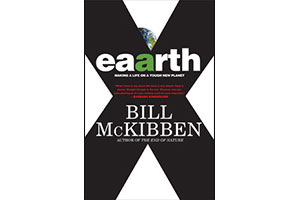I don’t spend much time “inside the Beltway,” so I’ve reserved judgment in recent years on the Beltway-centric strategy to advance climate policy. I’m willing to grant that all those Congress-focused lobbywonks are rational. As a seventh-generation Montanan who’s physiologically dependent on wide open spaces, I wouldn’t want to stay in DC long enough to find out. The place creeps me out.
But in the aftermath of the climate-legislation train wreck, I’m starting to wonder. Here’s the view from the cheap seats.
My organization works in states that will have to come along if the US Senate is ever going to pass a climate bill: Iowa, Montana, Nebraska, North Dakota, and South Dakota. This is the home of the Prairie Populists, the last true moderates, red states that elect blue leaders; a place of political conundrums that coastals find endlessly perplexing and try to avoid.
In the push for climate legislation, we’ve played host to a legion of parachuting climate groups that somehow don’t see themselves as parachutists: one-issue activists hired by national campaigns to organize low-population states outside the existing grassroots structure in those states. They draw resources away from in-state groups and often poison the public discourse on sensitive issues like climate with their tone-deaf messaging and hard-sell tactics. I’d say you know who you are, but apparently you don’t. If you did, you’d stop it, because it doesn’t work.
Grassroots organizing done right in our small-population, large-acreage states can yield extraordinary results. These are places where people who take any interest in the political process can know not just their lone U.S. representative but both U.S. senators on a first-name basis. Sens. Kent Conrad (D) and Byron Dorgan (D) of North Dakota represent a total population of less than 500,000 people of voting age. It’s like being the mayor of Memphis, Tenn., except that your citizens are spread out over 68,976 square miles.
Consider that at best 70 percent of those people vote in a high-stakes election, and you realize that it’s possible in a fairly short time to door-knock every Democrat who voted in the last North Dakota election. Or just catch them when they come to the state fair in Minot. Compared to organizing California, this is the proverbial cakewalk.
Maybe that’s why whoever had that $200 million to spend on advancing a climate bill didn’t take our states seriously. Or they took them too seriously, decided the local yokels couldn’t be trusted, and in came the paratroopers.
The locals may not know DC, but we do know what matters to voters here. Take a look at the votes that lined up on health care, which benefited from in-state organizing funded at least an order of magnitude better than climate was. In our five states, every Democratic senator voted yes. This reflects the deeply partisan divide in the Senate, yes, but it also proves that there was sufficient political cover for senators in deeply conservative states to vote for “Obamacare.”
That cover doesn’t exist on climate. Coal, oil, and gas are a powerful political force in Montana, North Dakota, and South Dakota. Biofuels are just about the only bone thrown to the ag sector in the cap-and-trade bill. And farmers aren’t just worried about higher energy prices in production—their families live here too, often on fixed incomes, and drive to distant jobs and medical facilities. Winters are cold and summers are hot. Higher energy costs will hit this region coming and going. No sane politician will take that lying down.
Howard Dean had it right with the 50-state strategy. We need not just better messaging but a better message, a real commitment to making the clean-energy transition work for rural America. And yes, rural America does still exist, think, and vote.
Until the coastals listen to those of us on the ground and take seriously the complicated political realities that Blue Dogs have to live with, our only hope is better climate policy in Beijing.
This post was produced by Grist as part of the Climate Desk collaboration.









